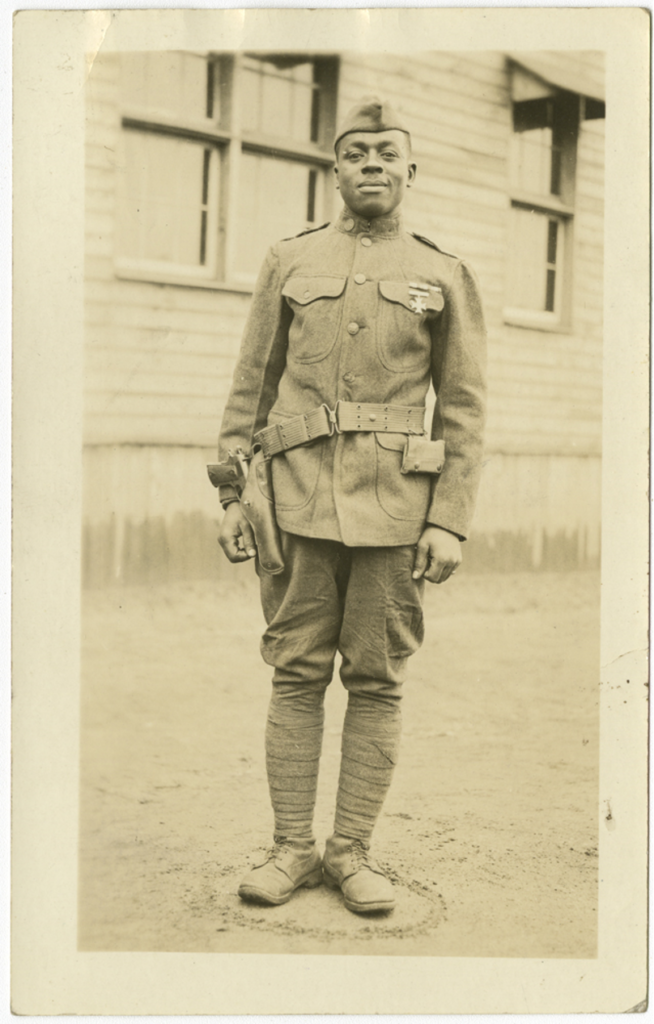Clay County Histories
Markus Krueger | Program Director HCSCC
Fans of military history and fans of Black history will have two events to go to at Minnesota State University Moorhead in early November.
Now on display in the Roland Dille Center for the Arts Gallery on MSUM campus is an exhibit called True Sons of Freedom. It is a collection of 24 photographs and short bios of African American World War I soldiers from Virginia. The First World War was an important time in African American history. For the men in these pictures, the Civil War was as close in time as we are from the Vietnam War. Most of these soldiers’ grandparents would have grown up enslaved and they would have known grey-haired veterans who escaped slavery to fight in the US Army. After the war, white supremacists reestablished control over several Southern states, including Virginia where the men in these photographs lived.
The Jim Crow system of racial segregation depended on violence and convincing everyone of the lie that we are not all created equal. But in 1917, when the USA entered the largest war that the world had yet seen, we sent four million young Americans to France to fight for freedom and democracy. African American young men left the South and found out that it doesn’t have to be this way. Certainly racism was encountered throughout their service, but they were treated better in New York City and war-torn France than they were in Virginia. There’s a certain dignity that comes with the uniform and African American soldiers fought with distinction in the trenches. They came home changed.
One of the soldiers in the exhibit is Isaac Sanders. Isaac spent 67 days in combat and returned home believing that he “should get a square deal before the law and everywhere that requires right and justice.” Many of the 40,000 or so returning African American veterans believed the same. They added their energy to the Civil Rights Movement during the hard times of the 1920s-30s. Unwilling to live under Jim Crow, many moved North in the Great Migration. They taught their children and grandchildren. They were in their 60s and 70s when the Civil Rights Act (1964) and the Voting Rights Act (1965) overturned most of the so-called Jim Crow laws. Isaac Sanders became a machinist in Philadelphia and died in 1988.
On Monday, November 6 at 4:30, we will meet at Gaede Stage near the art gallery to hear remarks from Dave Bellefuille of the Minnesota Department of Veterans Affairs, MSUM Provost Dr. Arrick Jackson, and I’ll say a few words, too. Then I have to rush off to Junkyard Brewing Company for History on Tap at 6pm to talk about local Prohibition Rum Runners. You can come to that, too.
And on Saturday morning, November 4, at 11am, we will be unveiling the statue of Felix Battles, “the pioneer barber of the Red River Valley.” The statue of this Moorhead African American pioneer will stand in front of his old house, which is now the Center for Business at Minnesota State University Moorhead. Felix, a veteran of the Civil War, is depicted in his army uniform to honor the service of the 209,000 African American US Soldiers who helped defeat the Confederacy and end slavery in America. Felix’s statue will be one of about 40 monuments nation-wide that look at African American experiences in the Civil War.


